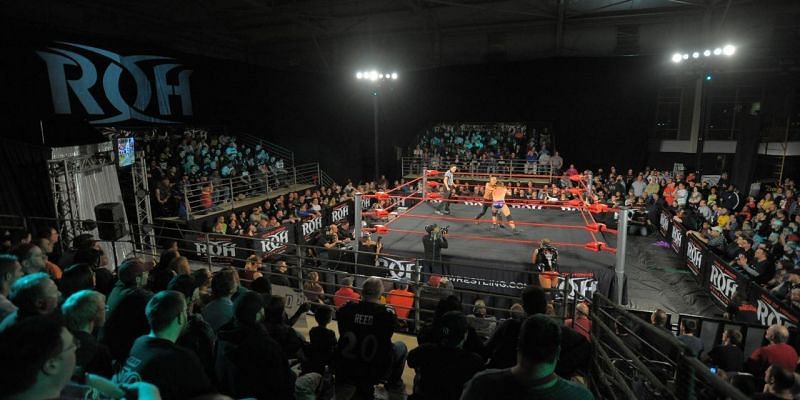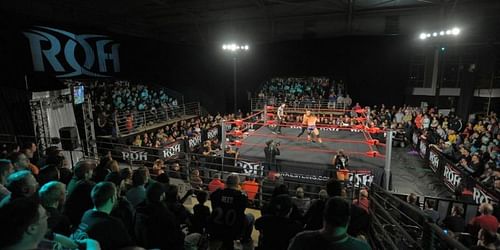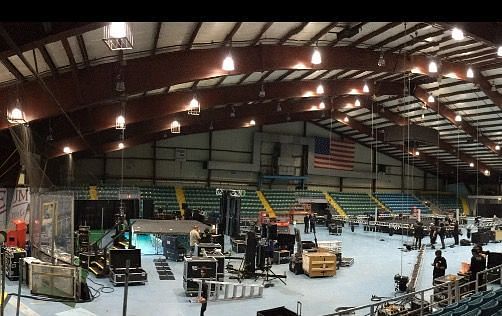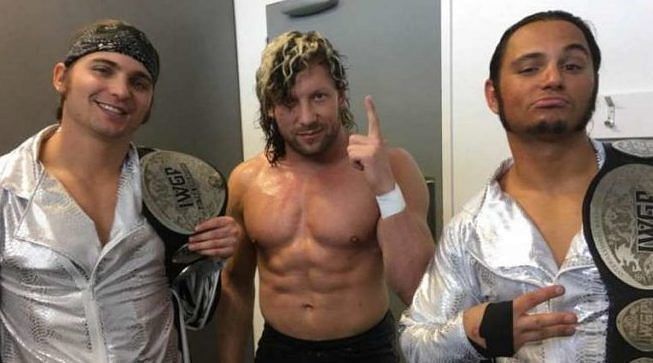
An inside look at the makings of an independent wrestling show

As most people know, there's more to wrestling than just WWE. Thousands of "independent" promotions exist all across the world, putting on shows all year long. Chances are, there's a live wrestling show happening somewhere in your area on any given weekend.
Along with the thousands of wrestlers it takes to make these shows happen, hundreds of people work behind the scenes to make sure the show goes on without a hitch. Whether it be audio, lighting, promoters, or ring crew, these people put in extraordinary hours to make sure fans get the best product possible.
In the last few months, I've been fortunate to experience the behind-the-scenes side of the industry. As a volunteer for a ring crew group based in northwest Indiana, I've helped set up rings for a lot of Chicago-based promotions, like Freelance and Zelo Pro, as well as the bigger companies who have come through the area, like ROH and EVOLVE. This has provided me with a different look into the wrestling industry.
So what goes into making a wrestling show happen? Below is a recap of what one day's work is like. This is from the ROH: Global Wars Chicago event from October 15.
Rise and Shine, Baby!

Being one of the few ring crew services in the area, we get asked to help out most Fridays, Saturdays and Sundays of the year. That was the case this weekend as well. We had a Saturday night show in nearby Berwyn, about 15 minutes south of Chicago.
It didn't start until 8 PM, which means we didn't get out of there until well after midnight. I laid my head down on my pillow at about 1:30 AM that night, knowing I had to be at ROH seven and a half hours later.
ROH was in its fourth day of four for its "Global Wars" tour, and you could tell the ROH employees were drained. They had been taking their trucks all across the Midwest of the U.S., and they were ready for the tour to be over. That type of rigorous schedule is taxing on a person, regardless if you're used to it or not.
Upon arriving that morning, I could tell this show was like no other I'd helped with. When I got there, all the ROH staff was already there and getting set up. The lighting people were in their area, while the ring crew people waited for others to show up and help. There were about 10-15 ROH employees and 10 volunteers to help with the setup.
The first thing you have to do is get the ring posts in place. Boy, was that a chore. The ROH posts are incredibly heavy, requiring three people to carry them to their destination. One has to then put the four 20x20 side rails in place to create the "squared circle."
Next are the 10+ metal bars that run horizontally across the rails, followed by the 20+ pieces of wood that run vertically, giving the ring its stability. This is followed by putting the padding on so the wrestlers don't break their backs on every hip toss. Then, you put the mat in place, tying it down with a rope to keep it tight. Then the ropes go into place, completing the ring set up.
You're not done there, though. After a quick lunch break, you have to put up all the guardrails around the ring. ROH has special signage they put on the guardrails as well, thus requiring all of them to be decorated with said signs. Next, the black mats are placed around the ring, which provides an extra layer of support for any moves taking place outside of the ring.
Once that is taken care of, chairs have to be set up for the fans in accordance to the seating layout of the show. This is the quickest step of the process since all hands are on deck for it.
While all of this is going on, another set of people is putting together the stage, lighting, and audio technology together for the show. All in all, it takes about seven hours to get everything set and ready to go. We started at 9 AM and were ready to go by 4 PM.
Working the show itself
Usually by this point, the ring crew is done working. We sit back, relax, watch the show, and wait for it to end so we can take the ring down. For ROH, though, it was different. We all were assigned different roles to help make sure fans were happy.
My job was to monitor the autograph line for Kenny Omega. He was the top draw of the night by a mile, to the point where we had two separate lines: one for him, and one for everybody else. The show started at 7 PM, and at 6:45 PM, the line wasn't getting any shorter. We had to cut the Omega line off, that's how crazy it was getting.

Kudos to Omega, though. He stayed for everyone, knowing he wasn't needed for the first half of the card. He stayed until 7:45 PM, signing autographs and taking pictures, making sure everyone got their money's worth. I then helped escort Omega back to the locker room unscathed.
At intermission, I did the same thing for the Young Bucks, Cody Rhodes, and Marty Scurll. After they finished up their autograph/photo session, I took them back to the locker room unannounced. It was tricky, but we had a job to do. Afterwards, I was put on crowd control, making sure people knew where they were sitting and weren't causing any trouble.
After the show
The show ended around 10:50 PM. Naturally, we had to wait a few minutes for fans to start clearing the arena before we could start cleaning up. Tearing down the ring basically goes in reverse order of the way we set it up, only you're more exhausted than you were 13 hours earlier.
Tearing down is always faster than setting up. Everyone is on a mission to get done and go home, so things are being taken down faster than your brain can process what's happening.
For the volunteers like myself, we didn't have to stay as long as the ROH employees did. Once we got all of the ring, guardrail, and stage equipment taken down, we were free to go.
Final thoughts
It was approximately 1 AM when we got the green light to head home, 16 hours since I had arrived at The Odeum in Villa Park. While it was a long day, it was one of the more rewarding experiences I had been a part of.
I got home around 2 AM, roughly 36 hours after my chaotic weekend had started. It's a grind being a part of the ring crew, but it's one of the coolest things to take part in. You gain an appreciation for the business once you see all of the work that goes into putting a show together.
And that's how you run an independent wrestling show.